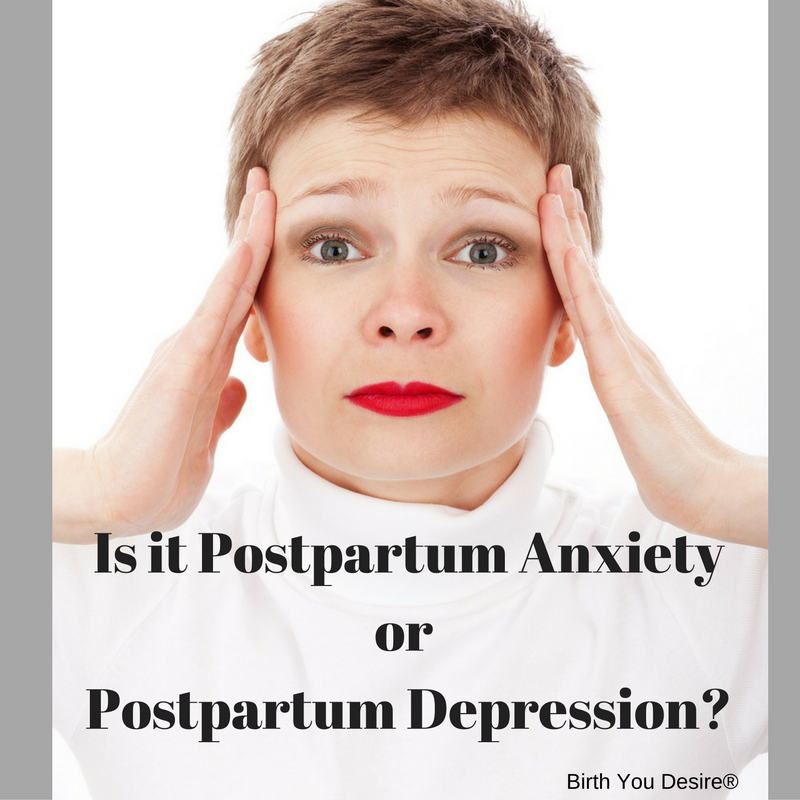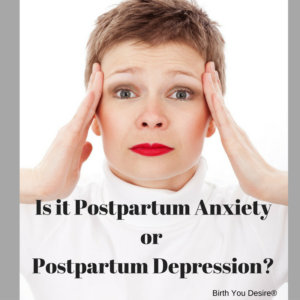BYD Blog
Is it Postpartum Depression?

Is it Postpartum Anxiety or Postpartum Depression?
More and more education exists about postpartum depression: most pregnant people are aware of the condition and what their risk factors might be. This is great, as postpartum depression impacts 1 in 8 people postpartum (and impacts 1 in 10 dads!). However, when thinking about postpartum depression, few consider postpartum anxiety to be something to be concerned about, which is alarming as 1 in 7 will experience anxiety following (or during) a pregnancy. While you might be aware of being tired, crying a lot, or not being interested in the baby as potential symptoms of postpartum depression, do you know what postpartum anxiety looks like?
 Is it Postpartum Anxiety or Postpartum Depression?
Is it Postpartum Anxiety or Postpartum Depression?
Postpartum anxiety can range in its intensity and can take on many forms, from the common concern about whether your baby is getting enough breast milk during feedings to having a strict order of rituals to perform as the only way that enables you to get out of the house while feeling “safe”. Obviously, this is a VERY wide spectrum. There are some similarities between postpartum depression and postpartum anxiety, for example, both have similar risk factors (previous history of a mood disorder, family history of a mood disorder, lack of social support, etc). Both are also relatively common, impacting about 15% of postpartum people. Both are highly treatable and can strike anytime in the first year postpartum.
Despite the similarities, there are some glaring differences. People with postpartum anxiety are connected to their babies and can care for them, though the anxiety might interfere with the caretaking: they are too afraid for their baby’s safety to let anyone else assist (thus not getting the needed breaks that caretakers must have); they might be afraid to drop the baby, which could prohibit them from carrying the baby down steps; they might be worried that the baby will stop breathing and watch over the baby (thus compromising their own need for sleep). Compulsive checking or rituals might exist: for example, in order to “protect” the baby, an anxious postpartum person might develop actions that he or she feels compelled to take. (Checking lights, the stove, or even non-related rituals) Not doing so fills the person with a debilitating sense of anxiety and fear that might leave them unable to proceed with going out or might have thoughts in their mind that are intrusive and won’t dissipate without preforming the ritual.
Like postpartum depression, postpartum anxiety can occur anytime within the first year of a baby’s life. It might be more prevalent for some during the first few months of nursing. For others, it might strike when a parent returns to work, and for others, it could occur as the baby approaches a year. We aren’t sure why postpartum mental health concerns occur: there is speculation that it might be linked to hormones, however, this doesn’t explain why it’s not more prevalent (as all postpartum people have hormone changes) or why it might impact a person after one pregnancy, but not another.
Another way that postpartum anxiety and depression are similar is in their treatment. Both are HIGHLY treatable with a qualified and trained mental health provider. Medication can be one aspect of treatment but isn’t always needed. Self-care is important for both: developing and learning ways to care for yourself and then taking the time to do them is essential.

Dr Julie Bindeman
Dr Julie Bindeman is a reproductive psychologist and the co-founder of Integrative Therapy of Greater Washington.
Amazon Affiliates
Click here to visit an Amazon list crafted by our students and clients for parents approved books and props for pregnancy through infancy.
